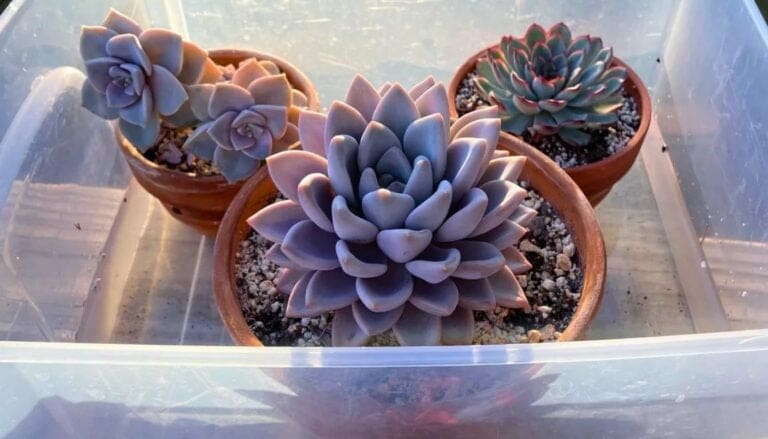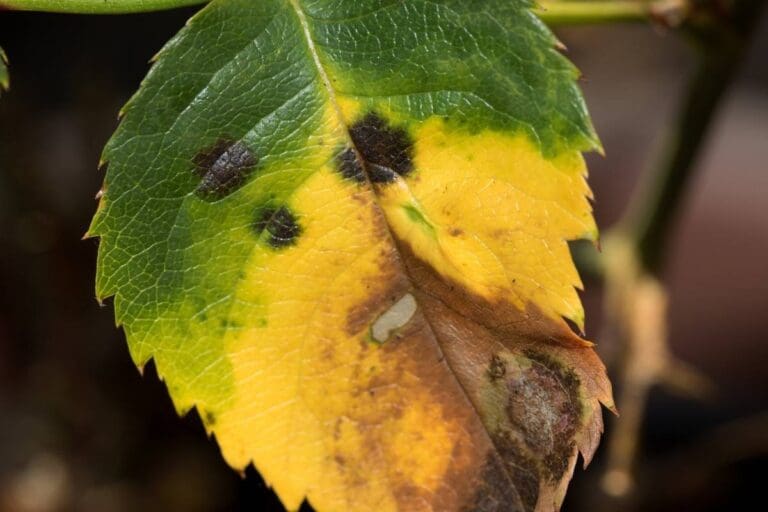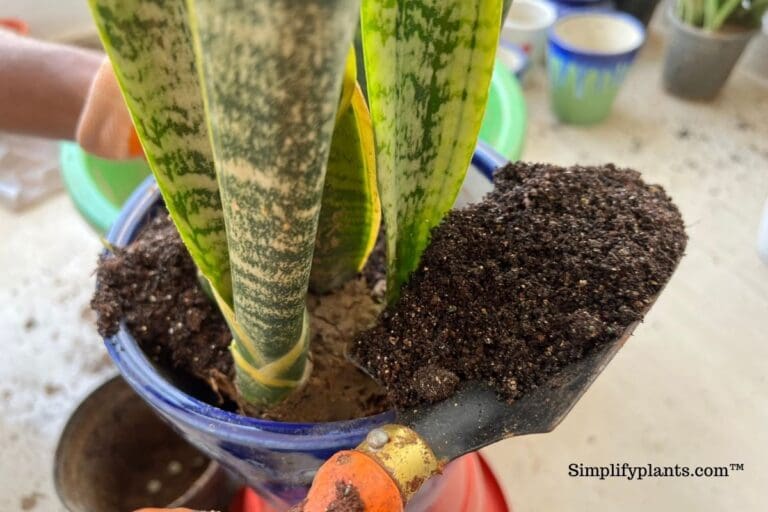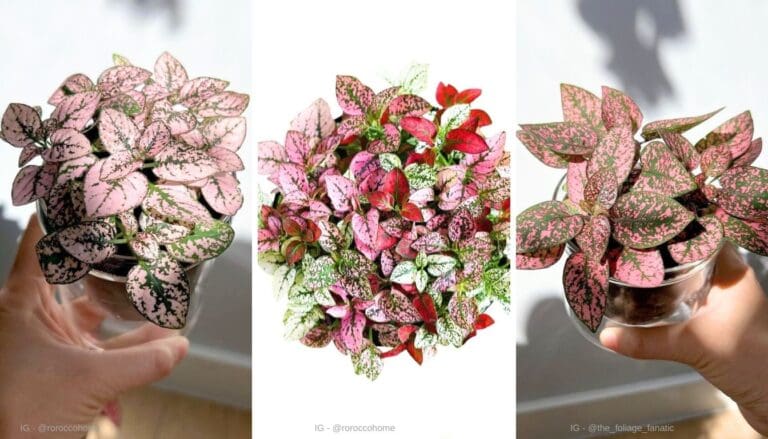Overwatering Vs Underwatering Plants: Signs, Fix & More
Both underwatering and overwatering could be detrimental to your plants. Is your plant drooping? Or is it yellow leaves appearing on your plant? It could be a problem in your watering regime. However, it isn’t easy to judge whether the cause is underwatering or overwatering. Let’s learn more about it.
Feeling the leaves and the soil is the best way to differentiate between overwatering and underwatering. If the leaves feel dry & crispy, you are underwatering the plant. If it is soft and droopy, you are overwatering it. Also, dry and crusty soil indicated underwatering, whereas soggy soil indicated overwatering.
That extra amount of water which you thought could have helped the plant stay alive for a little more extended period, might be the cause of its current unhealthy situation. That extra kindness could have killed your plant.
We have always suggested getting the watering of your plant right. For this, we have also kept a golden rule, which we will discuss in this guide.
Not only overwatering your plant but keeping your plant too dry for a longer period will cause equal harm to your plants.
In this guide, we will understand the different signs of overwatering and underwatering your plants and the fix.

Please note: Simplify Plants is reader-supported. Some links in the post are affiliate links and I get a commission from purchases made through links in the post.
How can you tell the difference between overwatering and underwatering?
To understand the difference between overwatering and underwatering your plant, we must first understand the causes of this situation.
Often, we are not entirely available for our indoor companions, and at times we might have to travel for a longer period than you thought it would take.
Our plants are neglected longer, and there is a considerable gap in the watering schedule.
Because of this, the soil in the pot goes dry for a longer time and results in the underwatering of your plant.
To avoid any underwatering circumstances, we should analyze the type of plants we should consider if he/she has a lot of travel time.
Generally, succulents and medium plants should be the choice of plants they seek.
Succulents and medium plants can go longer without water, whereas tender plants require a better watering regime.
Taking the same scenario once again, someone who is about to travel and thinks that adding a little extra water to the plant will do it by the time he is back.
But what we see instead is the plant drooping and the leaves turning yellow, some possible overwatering signs.
It’s not necessary that we need to add extra water to the plant for overwatering your plant. It could well be because of improper or blocked drainage holes causing overwatering.
Let us get into detail and understand the different signs of overwatering and underwatering your plant to judge the exact problem with your plant.
Signs of underwatering plants

There are a few signs of underwatering your plants. You will know this by the golden rule of watering the plant, which is by feeling the soil.
To check the soil, you take a handful of soil, either with your hand or with a spoon, and feel the soil.
The soil should feel a bit moist and not wet. It is the perfect time to water your plant.
By any chance, if the soil is too dry and is hard and crusty, it is a sign that your plant has been underwatered and needs water immediately.
There are a few more signs that can tell that your plant has been underwatered.
- Discoloration of the leaves
- There will be slow growth or no growth at all
- Soil is dried out and pulled away
- Leaves experiencing the same dry nature
- Drooping leaves
The slow growth is because the plant requires nutrients dissolved in the water for photosynthesis.
When the plant is underwatered, the amount of nutrients is less than required. Hence the plant does not grow or experiences slow growth.
We will often notice that your plant’s leaves have lost their natural color and look a bit drier and duller than natural.
Drooping of the leaves or the drooping of the plant will be seen throughout your plant.
Signs of overwatering plants

Signs of overwatering the plants can be seen throughout the plant and are differentiated easily.
By now, we know the golden rule of watering is by feeling the soil. We also know that if the soil is hard, crusty, and too dry, it has been underwatered.
When we feel the soil and the topsoil are incredibly moist or wet, or excess water is collected on the pot from watering, it is a sign that the plant is overwatered.
Amongst other signs, a few more symptoms will clear out that the plant has been overwatered.
- The leaves of the plant change its color to yellow and are drooping
- An overwatered plant gives an invitation to the pests
- Overwatering is the prime cause of root rot.
- Signs of Edema can be noticed on the top leaves
- Often, we also see the edges of the leaves turning brown
When we have overwatered the plant, there is a high chance that the plant will adopt stunted growth.
Because of the stunted growth, the plant might get root rot.
Stunted growth causes the plant to droop like an overwatered plant. If the plant has been through a lot, the leaves change their color to yellow and often shed.
Winters are the time when we get the plants overwatered. During winters, the plants experience low to no growth, and overwatering becomes common.
The browning tips of the leaves could also be a sign of underwatering your plant, but the golden rule says it all because the soil will be wet if overwatered.
Is it better to overwater or underwater plants?

It is not at all good to either overwater or underwater your houseplants.
The problem arises when some people water their plants way too much, and others don’t water them enough.
Plants need to be watered all the way through, and if you don’t, it gets worse for them. So, how do you water your houseplants?
First of all, make a note of what category your houseplant belongs to.
That means whether they are succulent, medium, or tender plants.
The plant category will tell how much water the plant needs and what should be the perfect watering regime for the plant.
Next, we will need to pick up a pot that has drainage holes in it. If there are no drainage holes, the excess water will not drain out from the soil.
If there are no drainage holes in the pot, then there is no way that the water will escape out of the pot, and the soil will be soggy and wet.
The plants do not like sitting on wet or soggy soil. By now, I hope we all must have figured out the why part.
The excess water that is settled will cause root rot, and if not root rot, they attract pests.
As stated earlier, get to know your plants. The answer lies in the signs provided by the plants themselves.
If the leaves are droopy or yellowish, it is a sign of an overwatered plant.
Don’t let your plant dry out too much, that is to a level from where it isn’t easy to get the plant back.
You can also understand by picking up the pot (if small in size). I mean, if they are heavy, the plant should be hydrated.
While watering, keep your plant under running water and allow them to take what they need. The excess water should run out so that it does not stay.
Do check the drainage holes, for they could be blocked and require a gentle tap or cleaning of the drainage holes.
To get the water right, we could also make a calendar for the watering regime or stick a note to the plant. However, it is wise to always check the soil before watering your plant.
Using a moisture meter is also suggested to master the art of watering the plant.
Also read: How long can indoor plants go without water? (With 25 examples)
How to fix overwatered plants?

We might have faced this issue at least once. Overwatering our plants is a common issue and might occur to anyone.
However, we can revive the plant from overwatering unless the stems of the plant are rotting.
If the branches start to rot, it is almost impossible to bring the plant back to life. For this process, we will need a few things:
- Garden Clippers/ Pruners
- Paper Towels
- Potting Mix (Depending on your plant)
- Chlorine Bleach
It is like a small operation that we will be performing when a plant suffers from root rot.
Remove the entire plant, along with the roots and the soil, from the existing pot. Any signs of root rot have to be eliminated.
To remove any roots with root rot, we will use the clippers/pruners and cut the roots with root rot.
We do not want the affected roots to be transferred to our new pot.
Next, we need to remove the moisture from the roots. To do this, we will now use paper towels and wrap them around the roots to remove the excess water.
While repotting the plant, we can either use the same container or use a different pot for repotting.
If we are about to use the same pot, a few steps are a must.
We need to clean the old pot and remove any water available in the pot. Take a mixture of water and household chlorine bleach in the ratio of 9:1, and soak the old pot for an hour.
The mixture of chlorine and water will ensure that any bacteria or diseases have been eliminated from the pot.
Clean the pot with fresh water and use paper towels to dry the pot. Once the pot is dry, fill 1/3 of the pot with the potting mix that’s required by your plant.
Untangle the roots of the plant and place the plant in the pot. This is a critical process and requires good care and a gentle hand. Do not harm the roots in the procedure.
Add extra soil around the plant to ensure that no space is allowed to remain. Give a gentle tap for the plant and the soil to settle.
Finally, we moved towards the placement and the water requirement of the repotting we had just done.
Place the plant in a sunny location so that the roots are dried out thoroughly.
Once the root balls are dried thoroughly, water the plant again. Please note the water requirement for your plant and water it accordingly.
Overwatering or underwatering your repotted plant might cause severe damage to the plant.
If necessary, stick a note to the plant or set up a reminder in the calendar. This is helpful and does the work as a sticky note on your refrigerator.
How to fix under-watered plants?

When we get too busy, or our jobs require a lot of traveling, and we are not back home for a month, it might cause an underwatering issue for your indoor mate.
Some plants are far from being revived, and some require a little extra care to get back to life.
The underwatering is caused because the plants do not get to absorb the right amount of nutrients from the water and the soil.
The plant has used the nutrients from the soil required for photosynthesis and will require better-growing conditions to thrive.
Sometimes, pruning the plant and removing the leaves, which are brown and crispy and will not thrive again, and the perfect watering and light conditions solve the issue.
The plants that have gone beyond the pruning will require an extra boost to thrive back to normal. To repot the plant, we will need:
- A standard potting mix (which depends on the plant)
- Perlite/pumice for aeration in the soil
- Worm Castings or compost
We will now remove all those dried leaves which are drooping and will not serve the plant anymore.
Ensure to use disinfected scissors/clippers for pruning because we do not want any bacteria or disease to be transferred to our plants.
We need to remove the fragile leaves and not the ones who want to stay on the plant.
Next, we will pull the plant up gently from the soil, brush off the soil, and clean the roots. Be very gentle during this process, as we do not want any harm to the roots.
Once we are done with the brushing off, we will now repot the plant using our fresh mix of standard potting mix, with perlite and compost.
Fill the new pot with the mixture and place your plant. Now, cover the area with some more soil so that no space is left. Any space will create space pockets, and we don’t want that.
Give a gentle tap to the pot and settle the soil and the plant.
Water the plant thoroughly because the plant has been underwatered and needs water to thrive.
We have done everything that an underwatered plant requires. We have improved the soil and the aeration in the soil.
We have added compost, which will act as an organic nutrient, and have also watered the plant.
Place the plant according to the requirement, whether it needs bright to medium light or indirect sunlight.
The plant needs perfect conditions to thrive, and we will need to provide whatever is necessary.
How long does it take for a plant to recover from underwatering and overwatering?
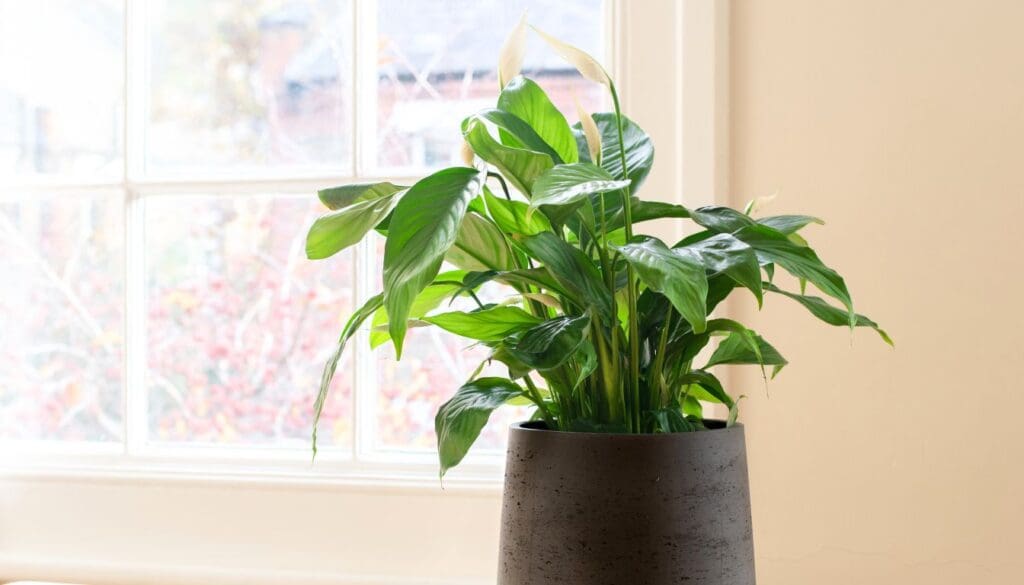
If the condition of underwatering is a mild situation, then we can thrive the plant within a few hours of watering the plant.
In case of neglect in overwatering, the roots may also kill the plant within 7-10 days.
However, if our plant has gone through enough and has also been through repotting, then all we need is patience.
It might take up to 5-7 weeks to get the plant back in perfect condition.
The time of the year also matters once we repot the plant. If we have gone through this repotting process during the winter, then the growth might be slower.
Do not assume that the plant is sad or dull. Just maintain the conditions right. Plants experience slow growth during the winter; however, it may also depend on the plant.
With this, we come to an end of differentiating the signs and fixing underwatering and overwatering your plants. Let us know if there are any difficulties or queries.
Recommended Garden Supplies
| Product Image | Our Recommended Gardening Supplies | Check Offers! |
|---|---|---|
Top Top
Top
Top
Top
Top
Top
Top
Top | rePotme Houseplant and Tropical Classic Potting Soil Mix | Check Offer On Amazon |
 Top
Top
Top
Top
Top
Top
Top
Top | Espoma Organic Indoor Plant Food | Check Offer On Amazon |
 Top
Top
Top
Top
Top
Top
Top
Top | GooingTop LED Grow Light 6000K Full Spectrum Clip Plant Growing Lamp | Check Offer On Amazon |
 Top
Top
Top
Top
Top
Top
Top
Top | Soil Moisture Meter | Check Offer On Amazon |
 Top
Top
Top
Top
Top
Top
Top
Top | Govee Hygrometer Thermometer, Bluetooth Enabled! | Check Offer On Amazon |
 Top
Top | LEVOIT Humidifiers for Large Room(Best For Plants) | Check Offer On Amazon |
 Top
Top
Top
Top
Top
Top
Top
Top | Upgraded DIY Automatic Drip Irrigation Kit, 15 Potted Houseplants Support | Check Offer On Amazon |
 Top
Top
Top
Top
Top
Top
Top
Top | Stainless Steel Heavy Duty Gardening Tool Set | Check Offer On Amazon |
 Top
Top
Top
Top
Top
Top
Top
Top | Bonide Insecticidal Soap | Check Offer On Amazon |
 Top
Top
Top
Top
Top
Top
Top
Top | Bonide 32 oz Spray Neem Oil for Organic Gardening | Check Offer On Amazon |
 Top
Top
Top
Top
Top
Top
Top
Top | Garden Safe Fungicide | Check Offer On Amazon |


